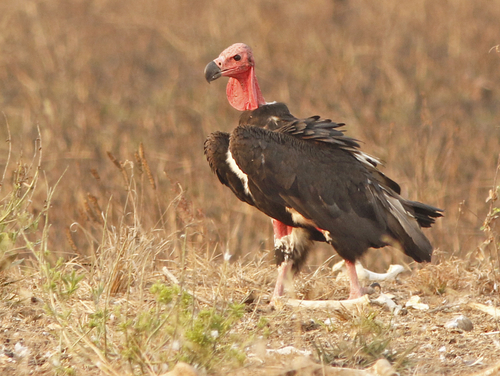
Red-headed Vulture
The red-headed vulture, with its vivid bald red head and robust black body, thrives in open landscapes across the Indian subcontinent. As a vital scavenger, it cleans ecosystems by feeding on carcasses, showcasing nature's intricate balance and the importance of every species in maintaining ecological health.
Length: 76 cm
Size
Brown, Red, Black
Color
30 mph
Top Speed
Critically Endangered
Conservation Status
Decreasing
Population Trend
Characteristics
Sarcogyps calvus, commonly known as the red-headed vulture, is a large bird found in the Indian subcontinent. It features a striking bald red head and black body. Preferring open country and forests, it plays a crucial role as a scavenger, helping to clean the environment by consuming carrion.
Distribution Range of the Red-headed Vulture
The red-headed vulture (Sarcogyps calvus), also known as the Asian king vulture, is native to the Indian subcontinent. Its geographical distribution includes countries such as India, Nepal, and Bangladesh, with some reports from Myanmar, Thailand, Laos, and Cambodia. Historically, its range extended further across Southeast Asia, but its presence has diminished significantly in these regions.
Red-headed Vulture's Habitat
Environmental Conditions
This vulture species inhabits open terrain and semi-arid regions, often found in areas with a mix of open grasslands and sparse tree cover. It is typically seen in lowland regions but can also inhabit foothills and hilly areas up to a certain elevation. The climate in these regions is generally warm, with distinct wet and dry seasons, which influence the availability of carrion, their primary food source.
Ecological Niche
Sarcogyps calvus primarily functions as a scavenger, feeding on carrion and playing a crucial role in the ecosystem by disposing of dead animal matter. It often frequents areas near human settlements, livestock fields, and wildlife reserves where carcasses are more likely to be found. This species prefers habitats where carrion is abundant, such as near water bodies, agricultural lands, and protected areas with healthy populations of large herbivores.
Copyright @ Nature Style Limited. All Rights Reserved.
 English
English